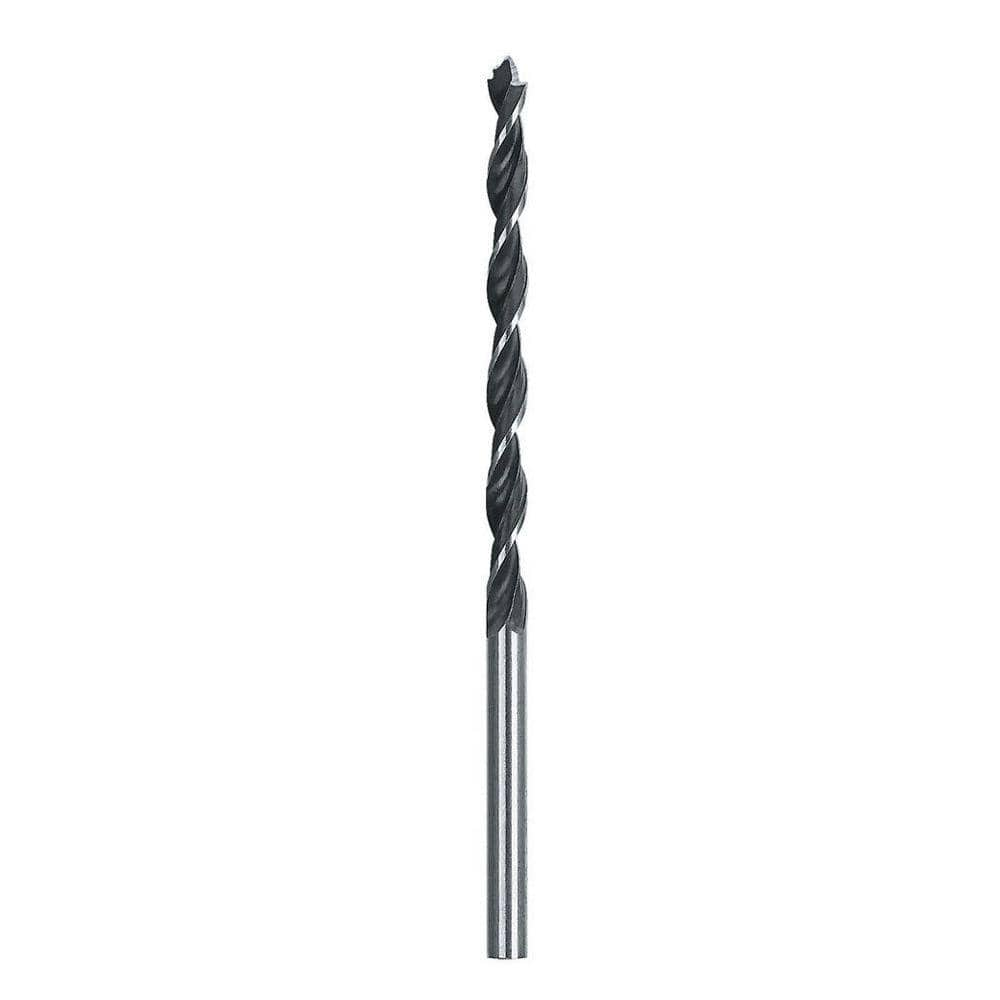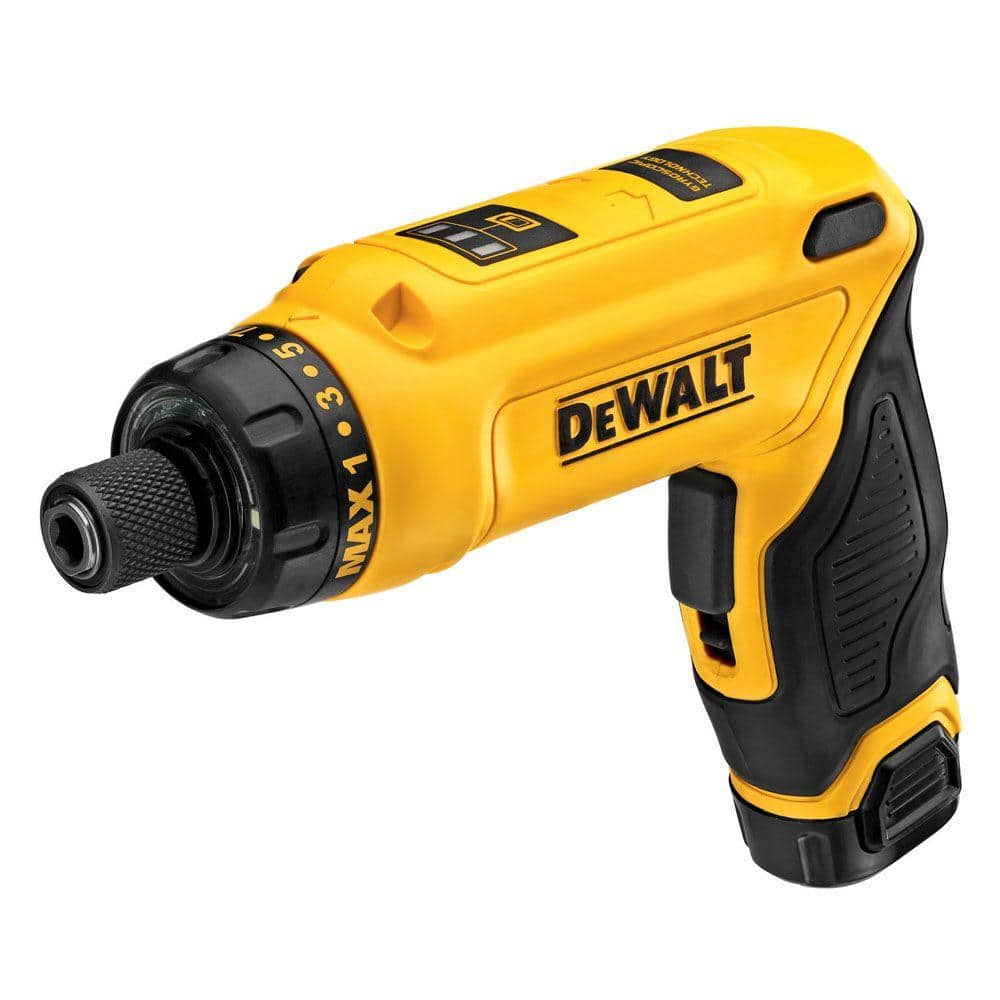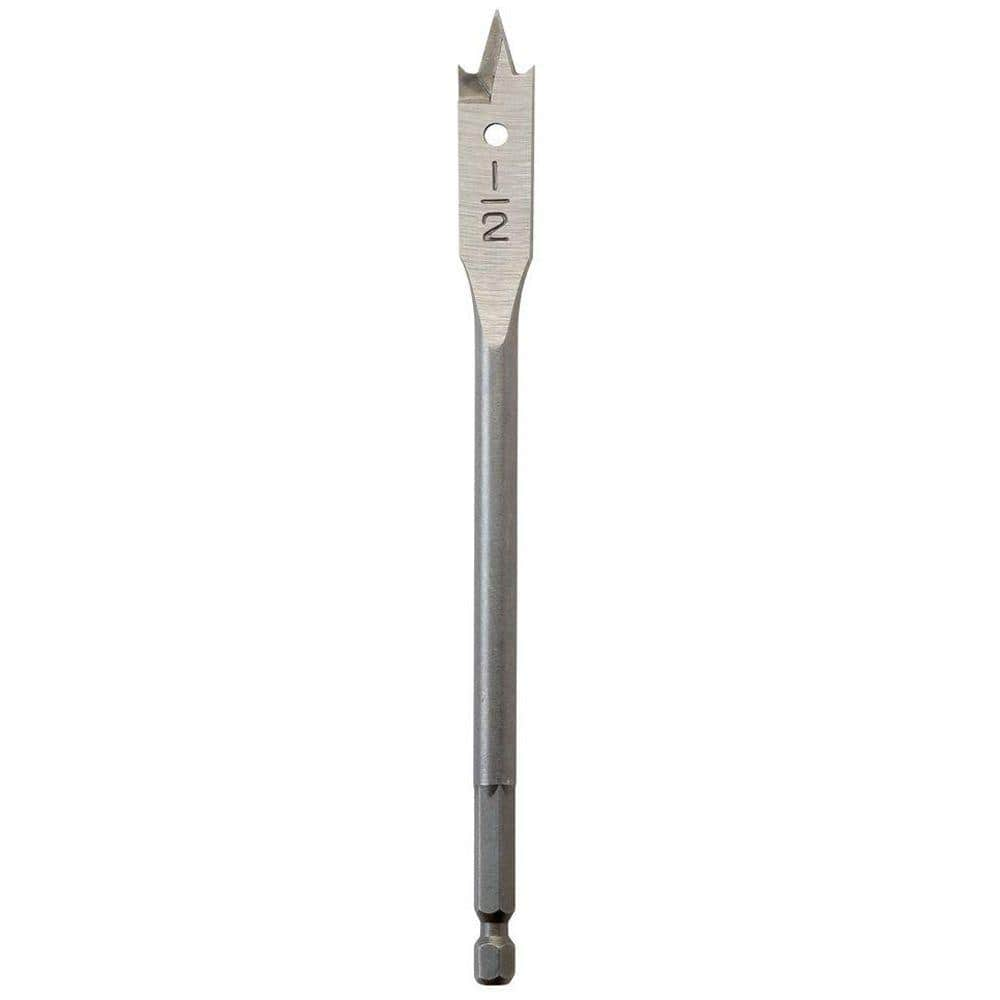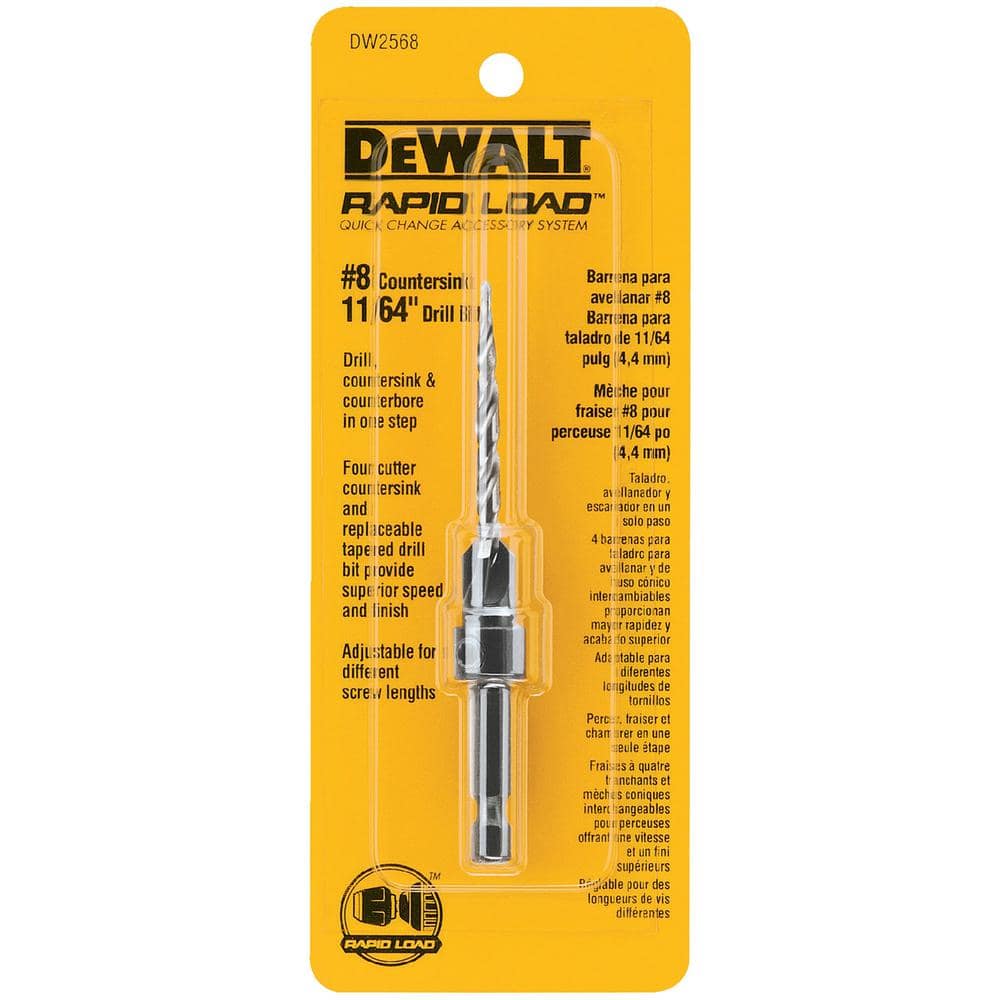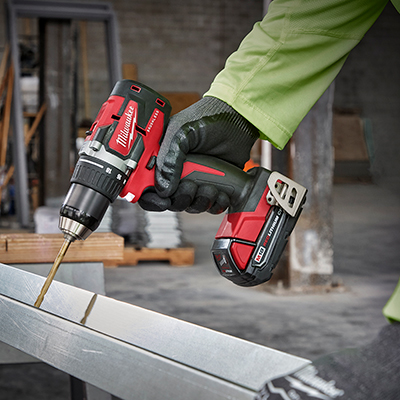Drill Bit Buying Guide

Published April 25, 2024
A drill is one of the best additions to the home toolbox and is essential in just about any project, whether it's a quick decor change, major room upgrade or building addition. However, a good drill is useless without correct types of drill bits for the job.
This guide highlights drill bit types so you can choose the right single bit or drill bit set
to get your project off the ground.
Table of Contents
What Are Drill Bits Used For?
Drill Bit Construction
Twist Drill Bit
Brad and Pilot Point Bit
Auger Drill Bit
Spade Drill Bit
What Are Drill Bits Used For?
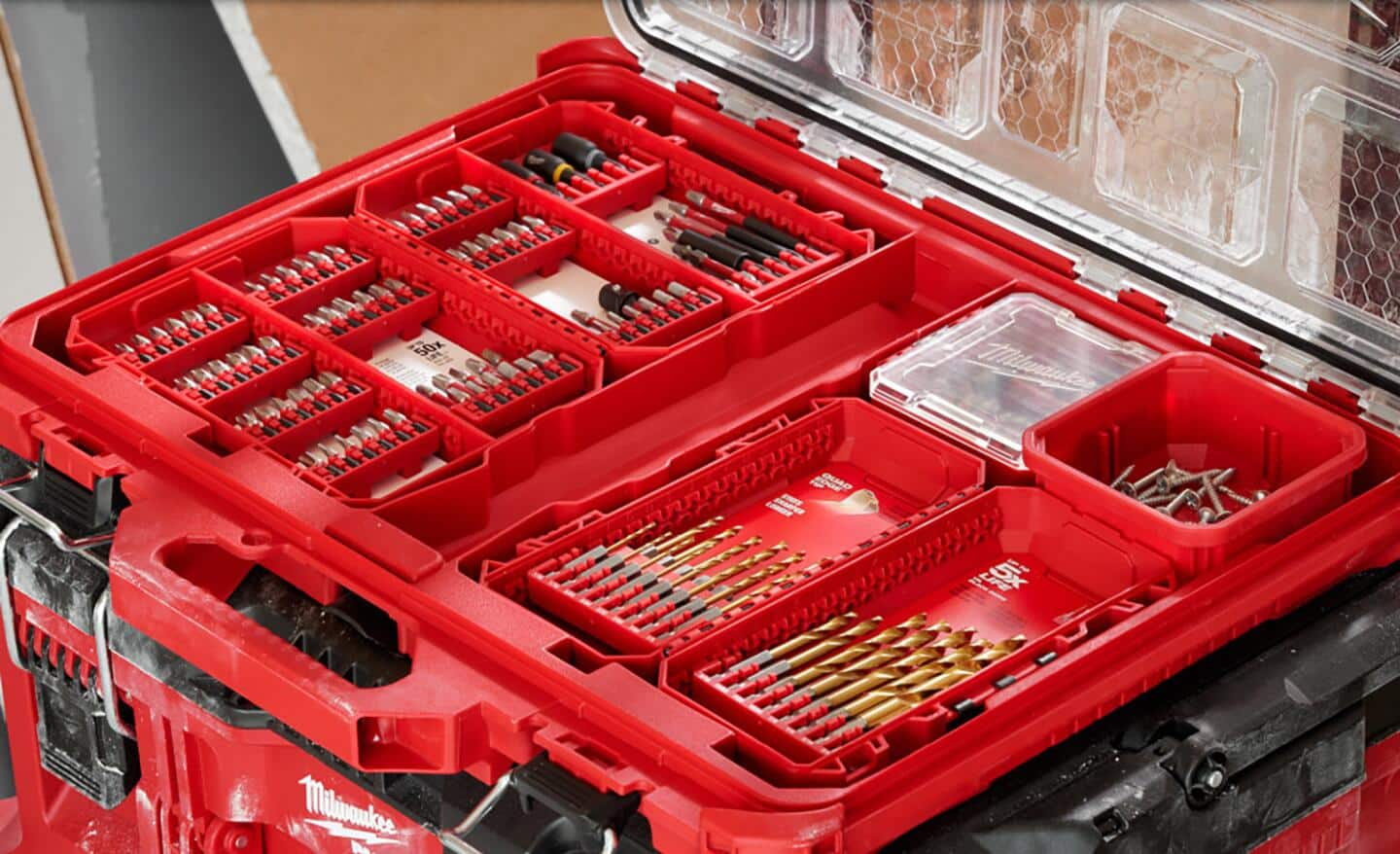
Drill bits make holes in a variety of different common materials. These include different types of wood, metal, plastic, ceramic tile, porcelain and concrete. Different types of drill bits made for steel, aluminum, copper, cast iron, sheet metal, fiberglass, brick, vinyl flooring and more are also available.
Sized for their diameter, types of drill bits are constructed in a range of styles to help with specific tasks. You can find a drill bit set that includes many of the standard bits needed for home repair.
Drill Bit Construction
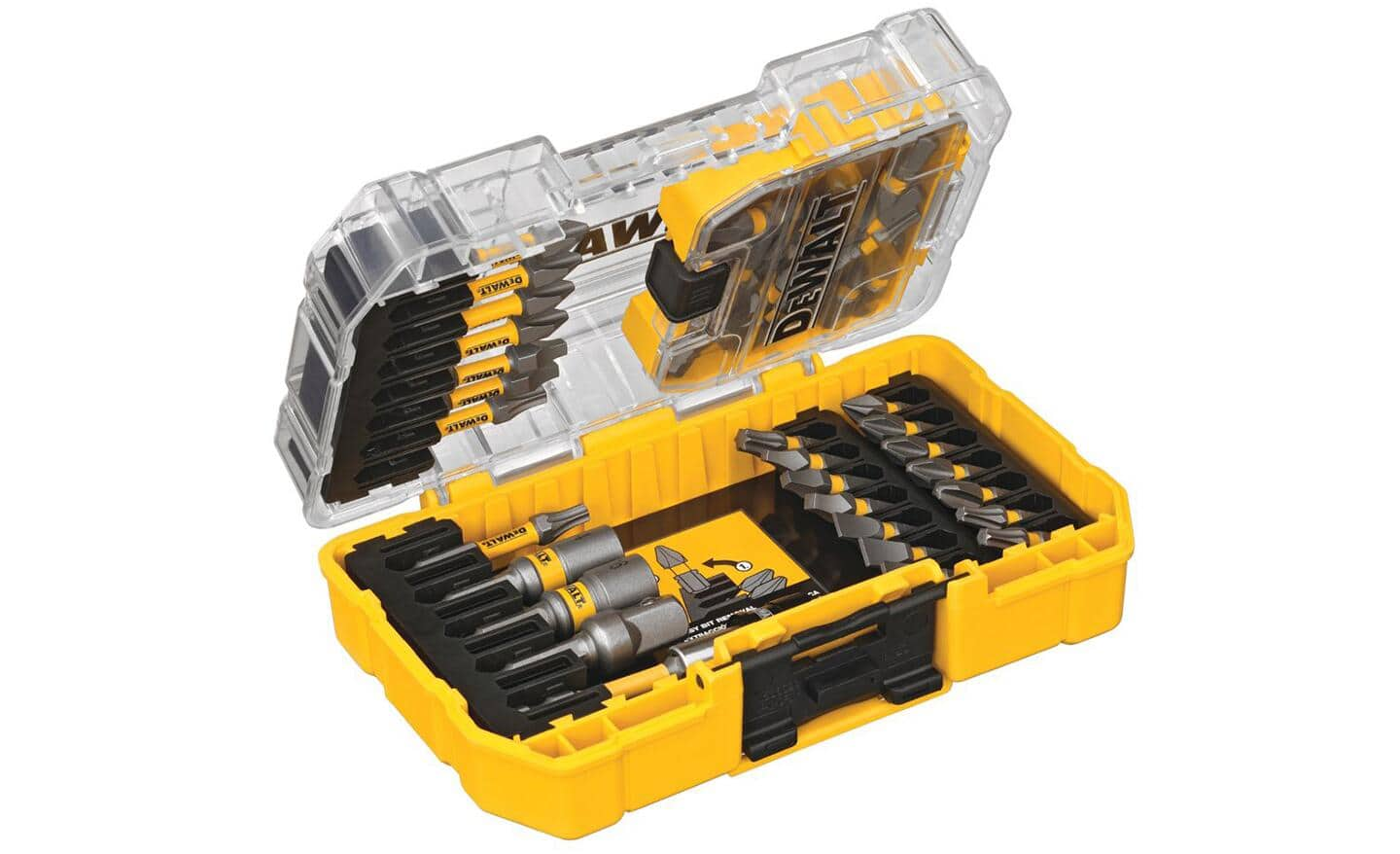
When it comes to drills, there are two easily identifiable parts you need to know about – the shank and the chuck. The following information explains how drills and drill bits work:
The shank is the end of the drill bit that fits into the drill and is secured by the chuck. A round shank centers a bit in the chuck more accurately. The flat surfaces on a hex shank allow the chuck to grip the drill bit securely.
Quarter-inch hex shank bits are used on 1/4-inch impact drivers and can be quickly changed. SDS (slotted drive system) shanks are used for concrete drills and demolition bits and work specifically with SDS-Plus and SDS-Max rotary hammer drills.
The chuck is the part of the drill that attaches the drill bit. Most power drills for home use have a 3/8-inch or 1/2-inch chuck. Larger chucks come in 5/8-inch and 3/4-inch sizes, but are usually fitted on heavy-duty and industrial power drills and drill presses.
Twist Drill Bit
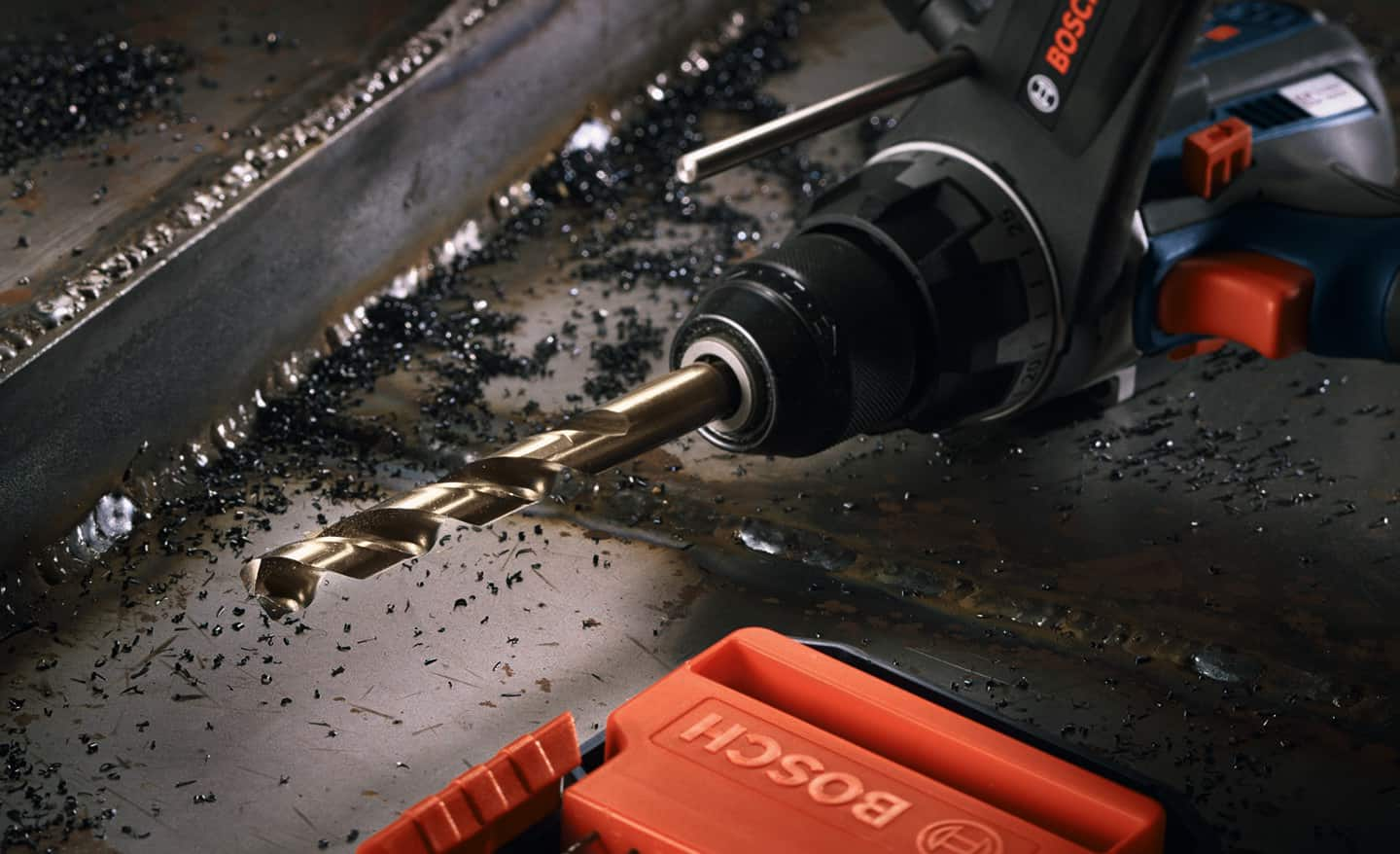
Twist drill bits, also called fluted bits, are used on light metal, wood, plastic, metal, ceramic and masonry. This type of drill bit is works well for holes up to one inch in diameter and are useful for home repairs, maintenance and building projects with metal, wood or ceramics. This is the most common types of drill bits for home use.
Brad and Pilot Point Bit

- Brad point drill bits can be used on wood.
- This type of bit is useful for furniture making, cabinetry and general woodworking.
- These bits have a W-shaped centered point and produce a clean exit hole.
- This is often the best drill bit types for wood DIY projects.
Auger Drill Bit
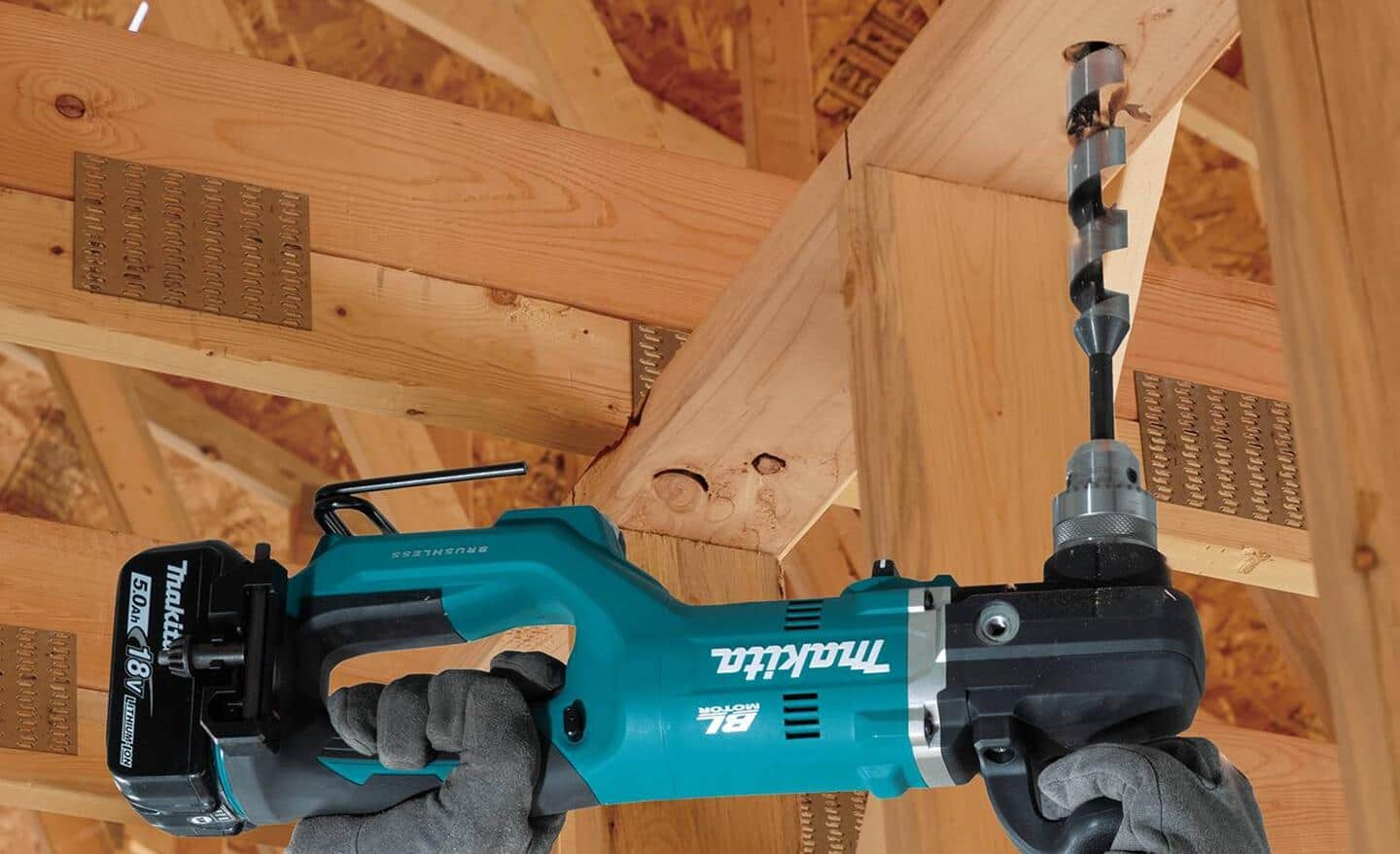
Auger drill bits can be used on wood and are ideal for large woodworking and building projects. Their screw-tip helps draw the drill and requires less pressure to perform.
Spade Drill Bit
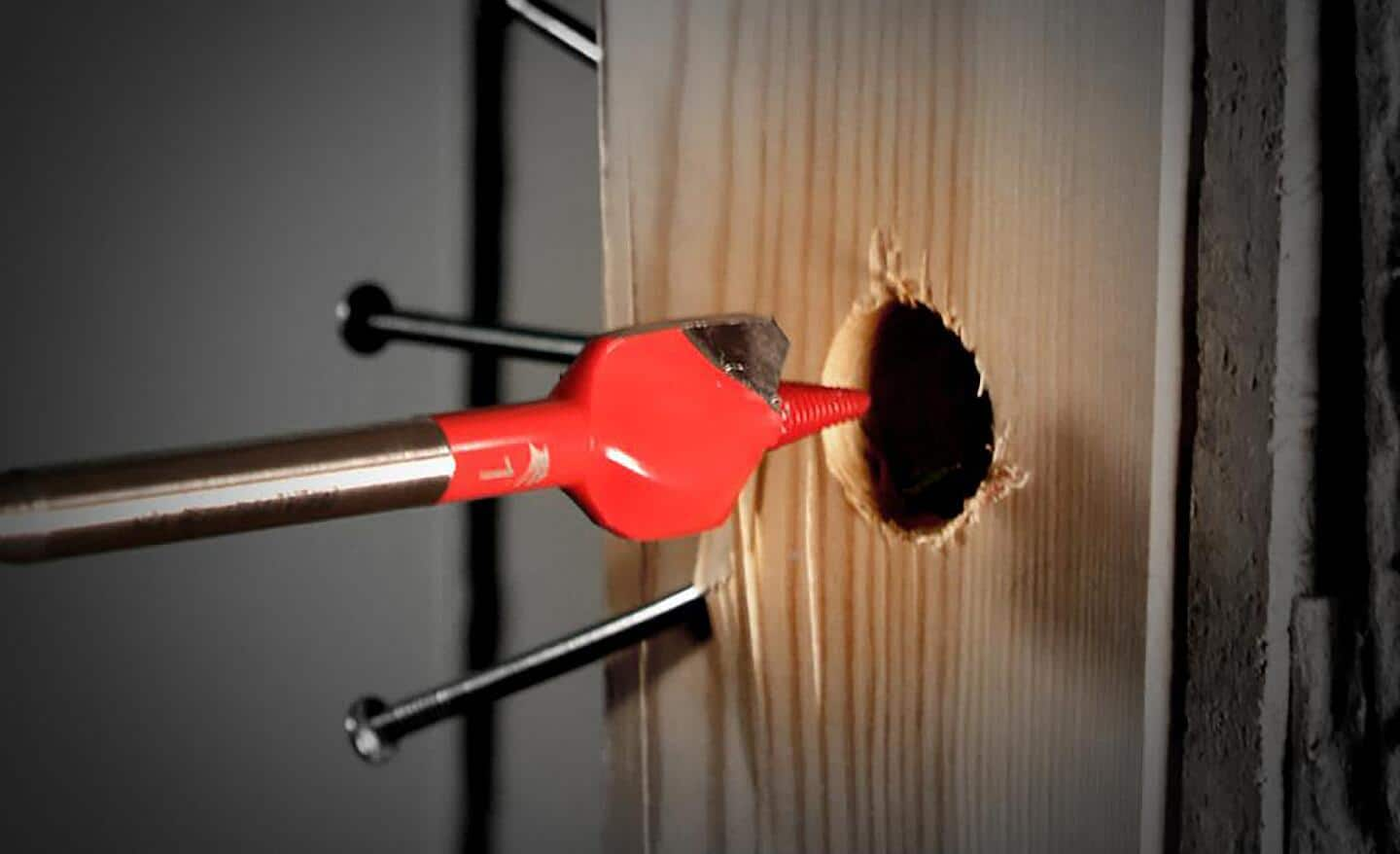
- Spade drill bits can be used on wood.
- This type of drill bit works well for drilling holes in wall studs for framing, electrical, plumbing and fine woodworking projects.
- A spade drill bit bores holes with a large diameter.
Forstner Drill Bit
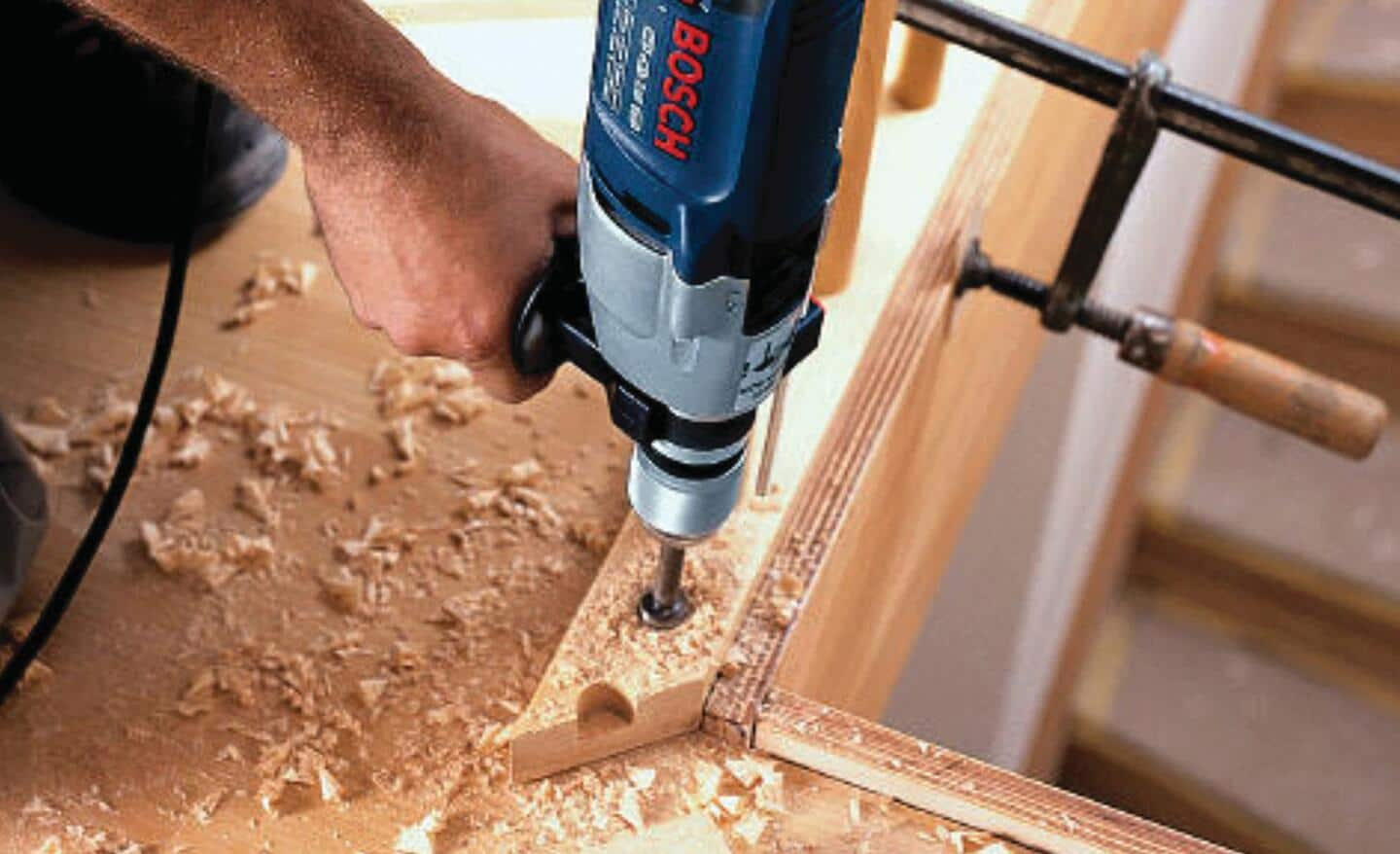
Forstner drill bits can be used on wood and are useful for woodworking. This type of bit creates a clean hole with a flat base. It also works better in a drill press than a handheld drill.
Countersink Drill Bit

- Countersink drill bits can be used on wood.
- These types of drill bits are useful for general woodworking and cabinetry.
- A countersink drill bit drills pilot holes and more to the right depth and creates a recess to countersink flush the head of fasteners.
Installer Bit
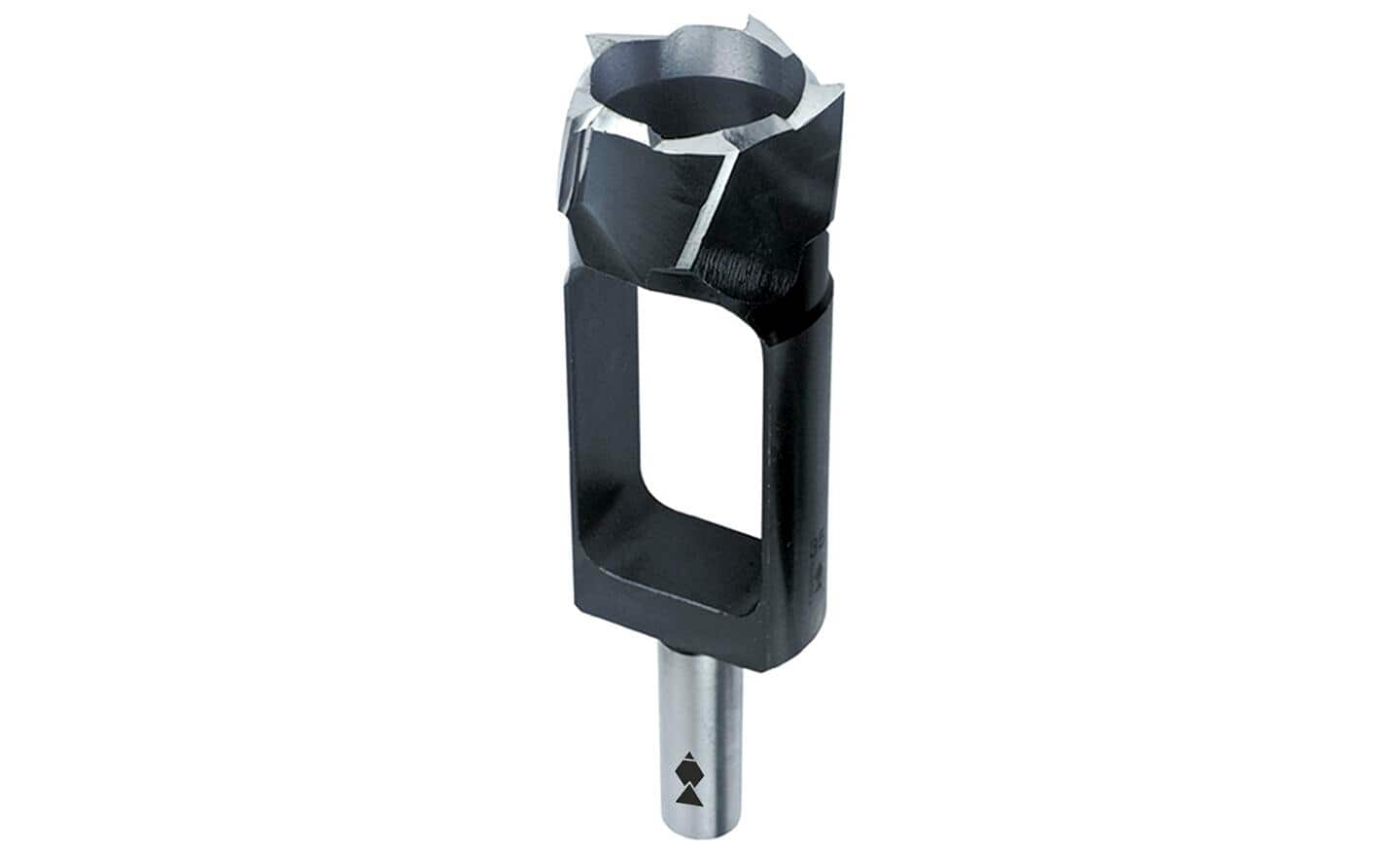
- Installer bits can be used with wood.
- These bits are used for woodworking and cabinetry projects.
- They create wood plugs that are used to conceal countersunk fasteners.
Step Drill Bit
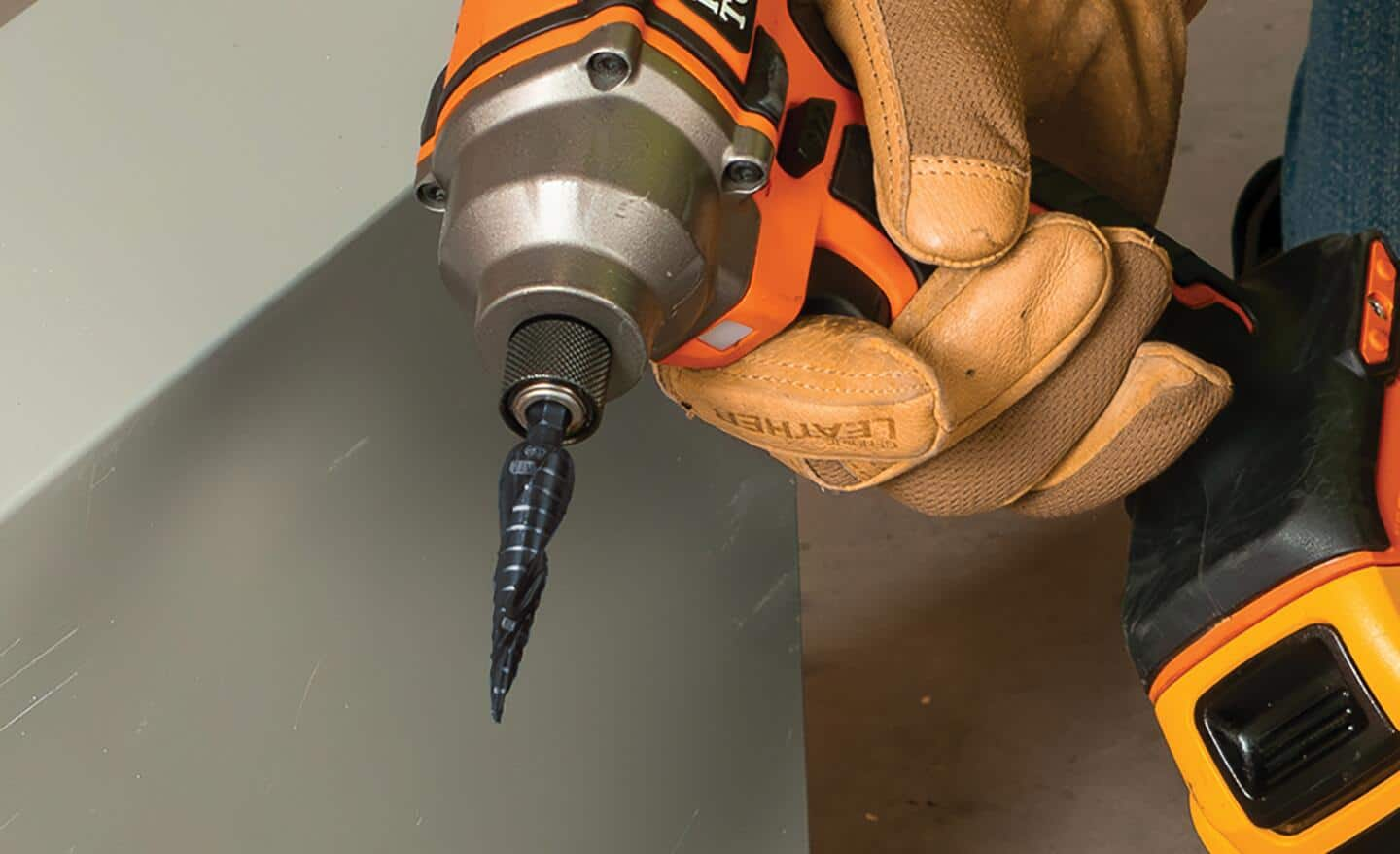
- Step drill bits can be used with metal and wood.
- This type of drill bit is useful for drilling pilot holes in woodworking and sheet metal-based projects.
- A step drill bit allows you to drill holes of multiple sizes with same drill bit and can be used to clean away waste material in holes.
Tile Drill Bit
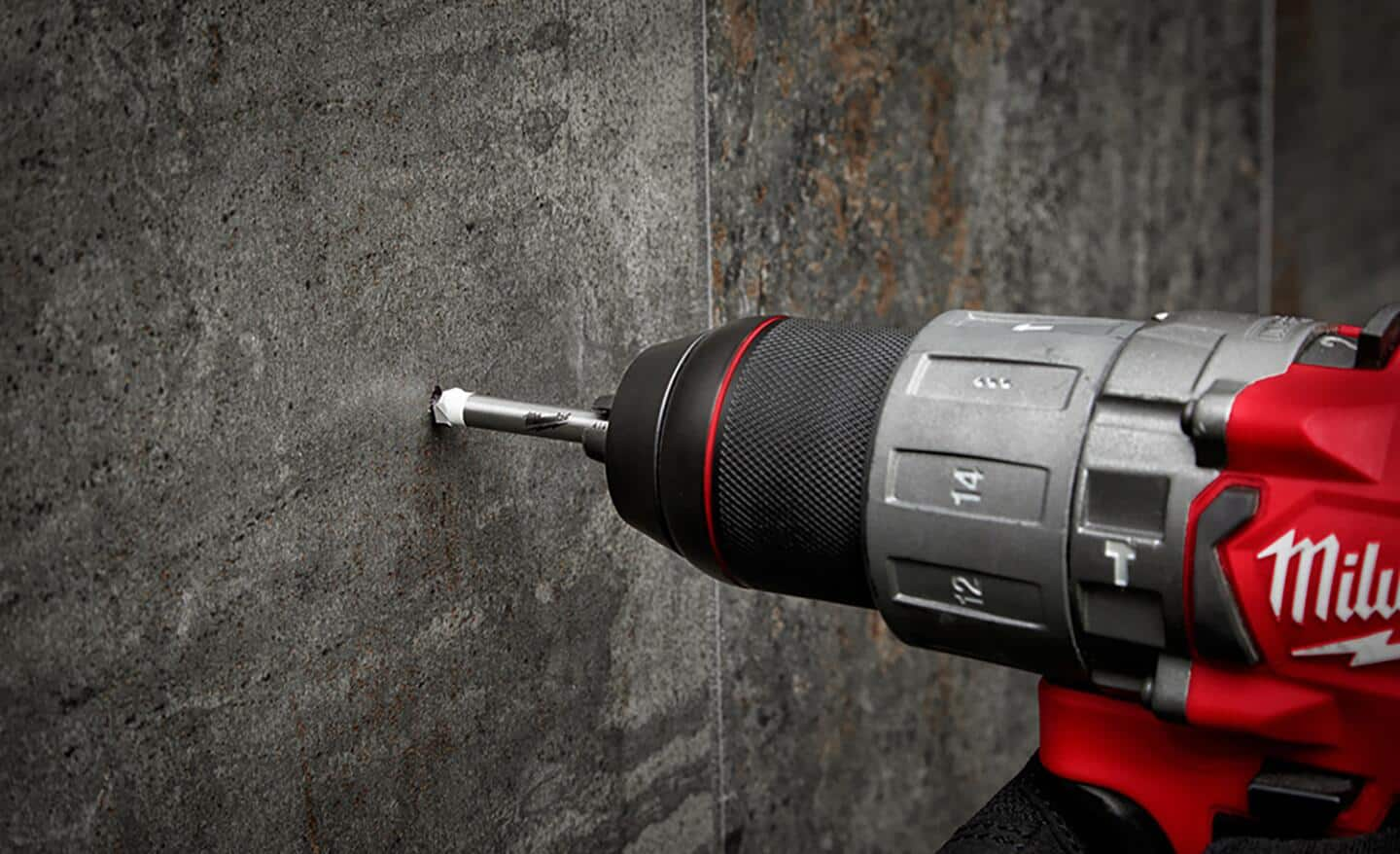
- Tile drill bits can be used with ceramic and porcelain tile.
- Use a tile drill bit for flooring, backsplash and tile wall installations or renovations.
- A carbide-tipped bit reduces chips and cracks when drilling various types of tile.
Glass Drill Bit
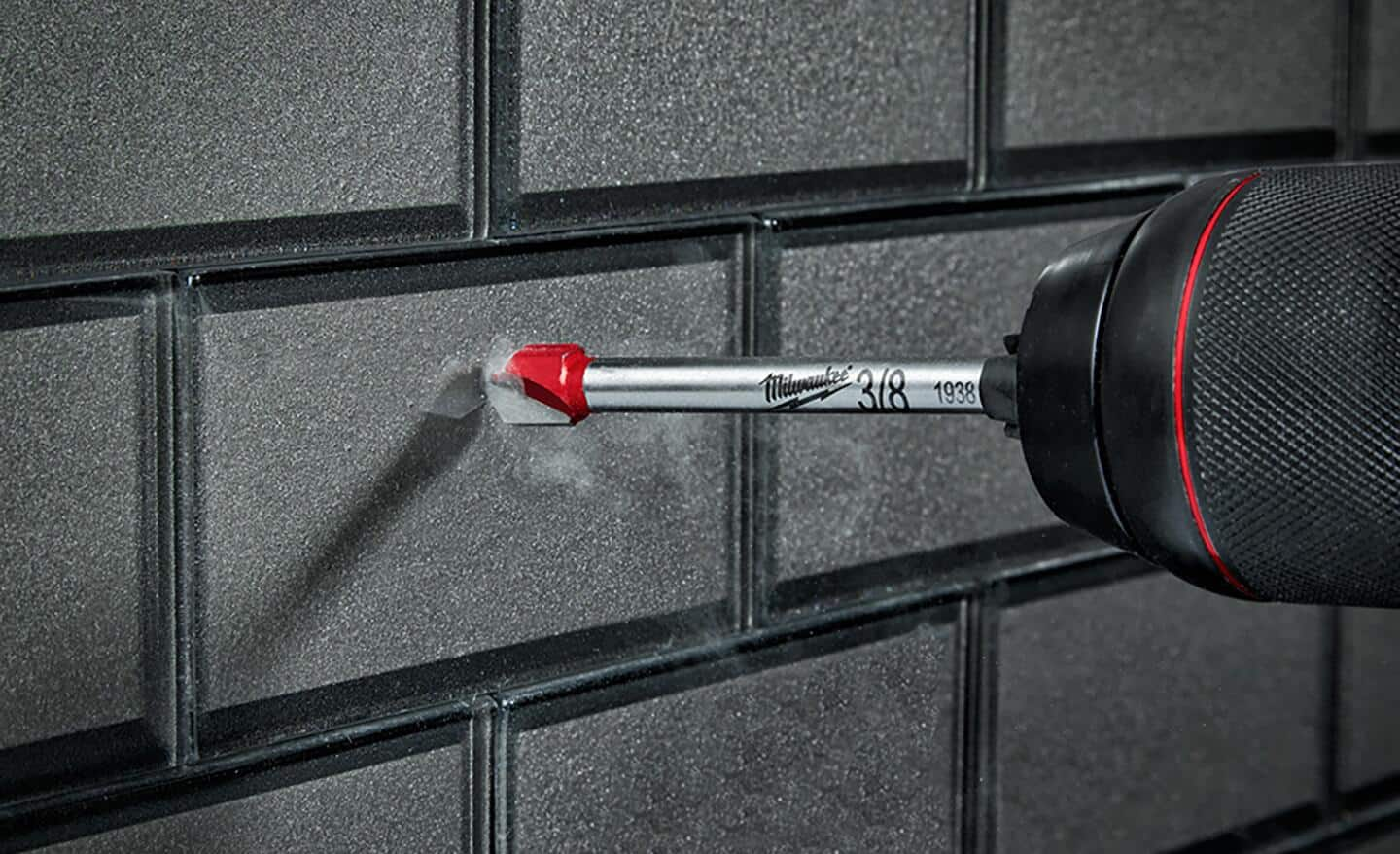
- Glass drill bits can be used with non-tempered glass and ceramic.
- This type of bit is useful for DIY home renovations and repairs.
- Glass types of drill bits drill holes in glass and ceramic; use with rotary drill only at slow speeds.
Masonry Drill Bit
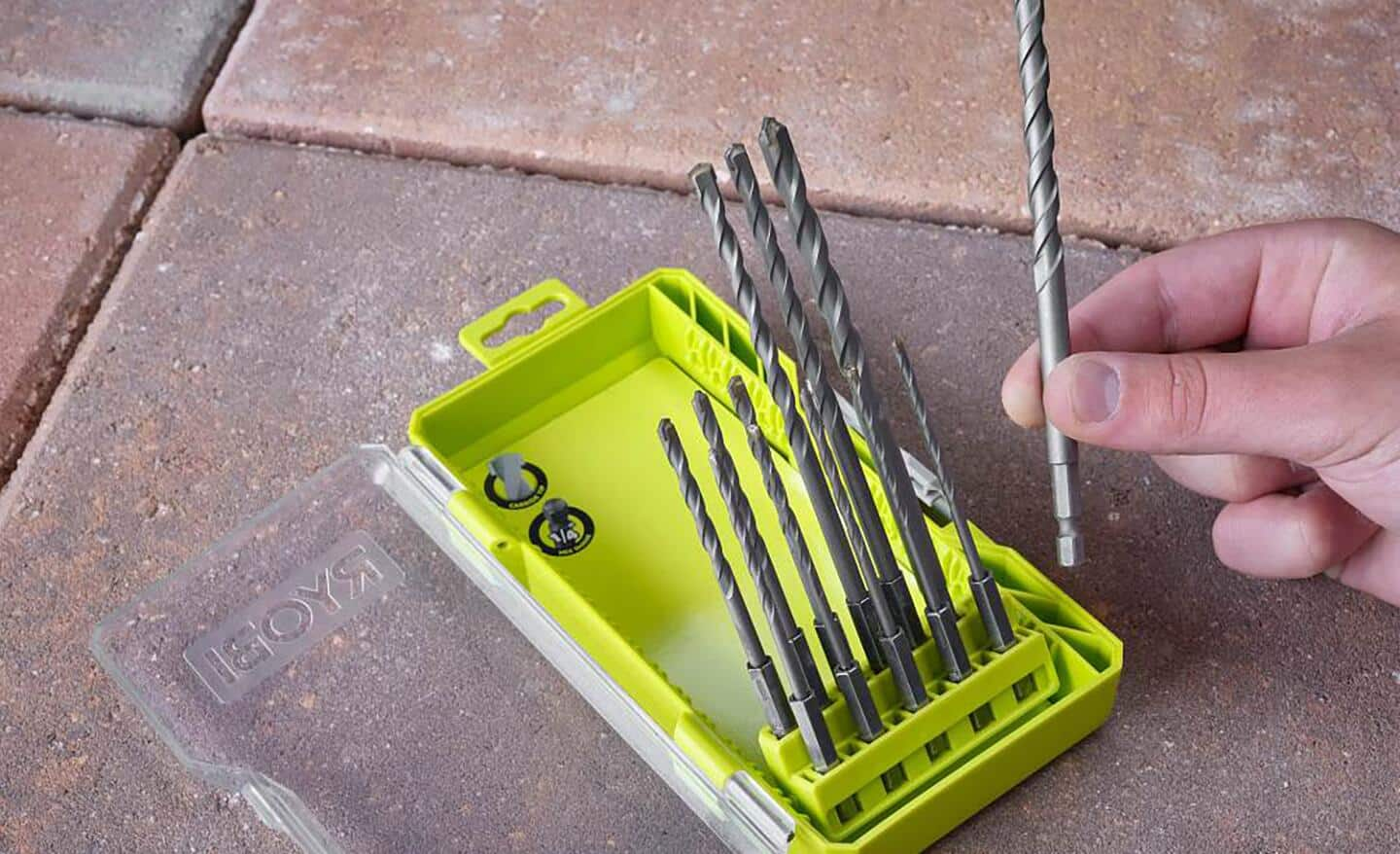
- Masonry drill bits can be used with concrete, brick or masonry.
- This drill bit is ideal for home building and repairs.
- A masonry drill bit is best used with a hammer drill; some models are designed for use with a rotary drill but they are slightly less effective.
Hole Saw

- Hole saws can be used with wood, metal, tile and masonry.
- A hole saw is a multi-purpose bit for building, renovation and repairs.
- This type of bit attaches to a shank to connect to the drill and drills large cut-out holes, often used to fit piping.
Screwdriver Drill Bit
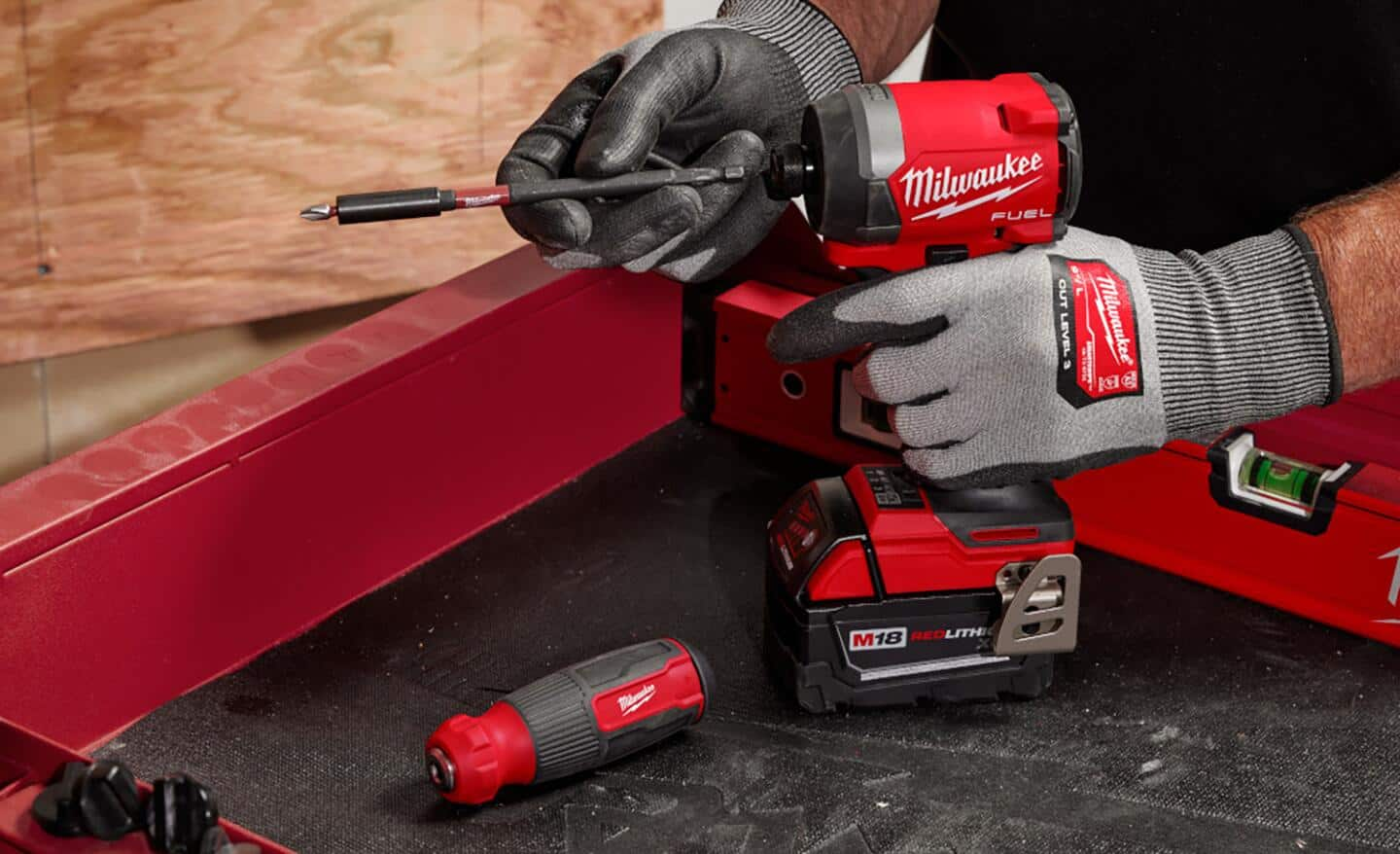
- Screwdriver drill bits can be used with many materials depending on tip type.
- A screwdriver bit works well for building projects, renovations and machine work.
- Use this type of drill bit with handheld drills and impact drivers depending on type.
Coring Drill Bit

- Coring drill bits can be used with masonry, brick, wet concrete, concrete, concrete blocks and more depending on tip type.
- These are useful for heavy-duty building projects.
- Coring drill bits are often used with a rotary hammer and impact tools.
- This is usually the best drill bit for concrete work.
Bit Holders and Extensions
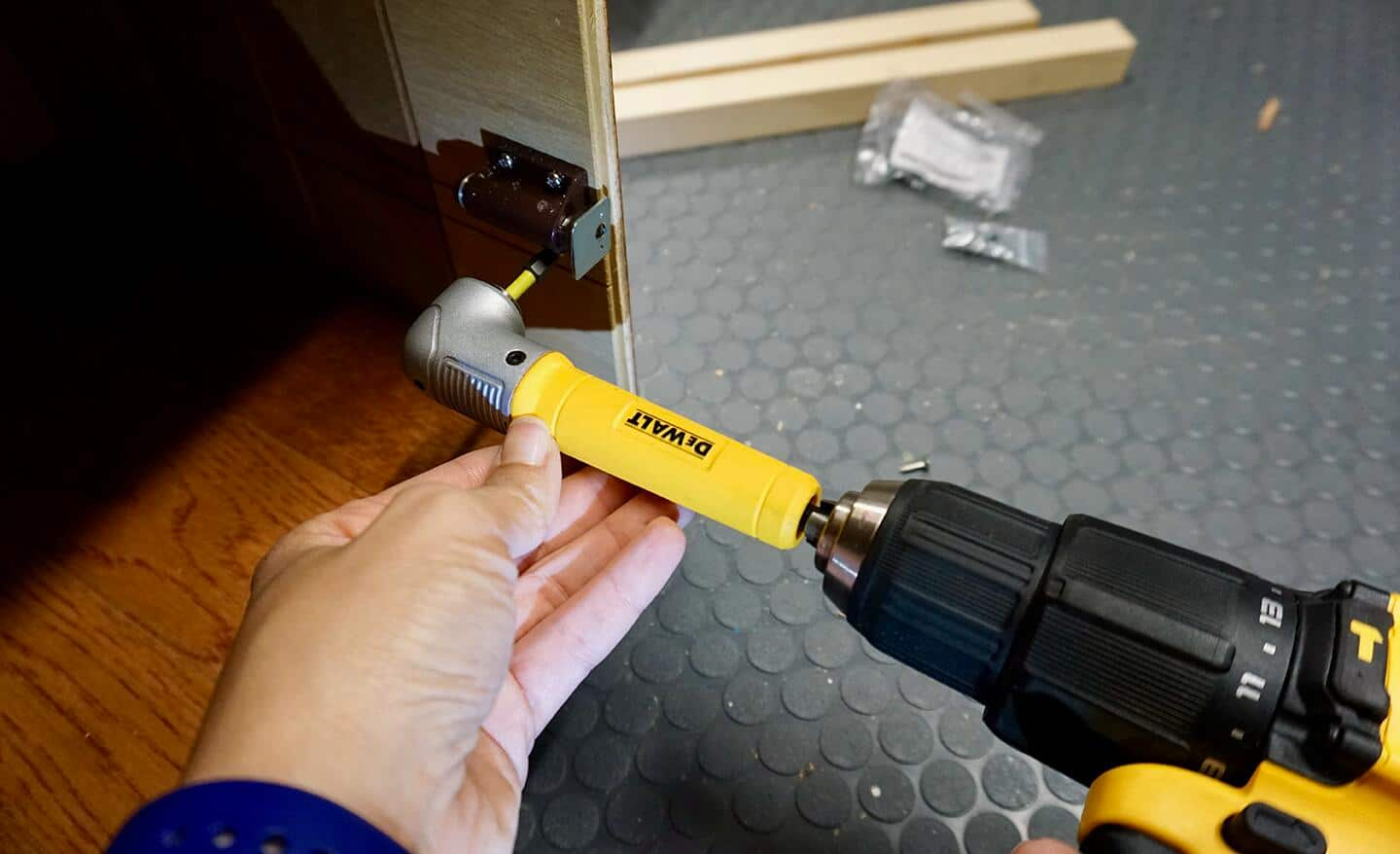
- Bit holders and extensions can be used with many different bit types.
- A bit holder extends your tool's reach for hard to access work.
- A bit holder and extension work with handheld drills and impact tools.
Specialty Drill Bit Types and Accessories
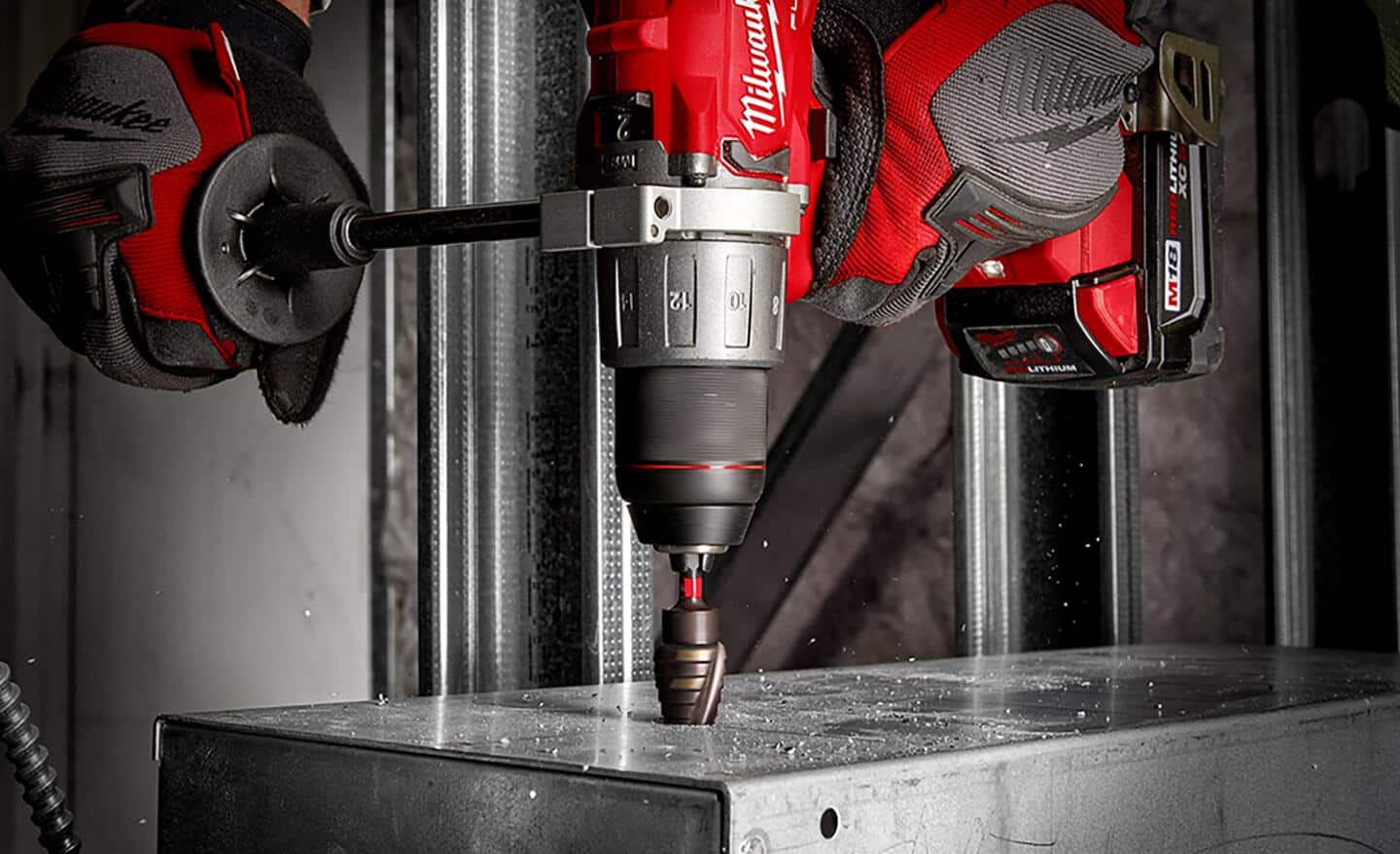
Among the various
wood drill bits,
glass drill bits
and
concrete drill bits, there are other options and accessories for more specialized tasks:
- Installer bits
are designed for installing wiring. The drill bit has a hole in the side used for feeding wiring through the drilled hole. - Self-centering drill
bit accurately centers the drill hole each time the drill is applied. This type of bit is useful for pre-drilling holes for screw-mounted hardware. - Drill saw bits cut irregular holes in metal or wood. They are best for small jobs; can't replace a jigsaw.
- Pocket hole bits, when used with the proper jig, let you drill angled holes for screws and are best used for making wood joints.
- Scaling chisels
are used for scaling and chiseling masonry in hammer drills. - Right-angle drill attachments
give you access in tight spaces where the drill might not fit. - Screw extractors
let you remove stripped or damaged screws with a reversible drill/driver. - Depth stops
let you set the depth to which you drill.
Types of Drill Bit Materials and Finishes
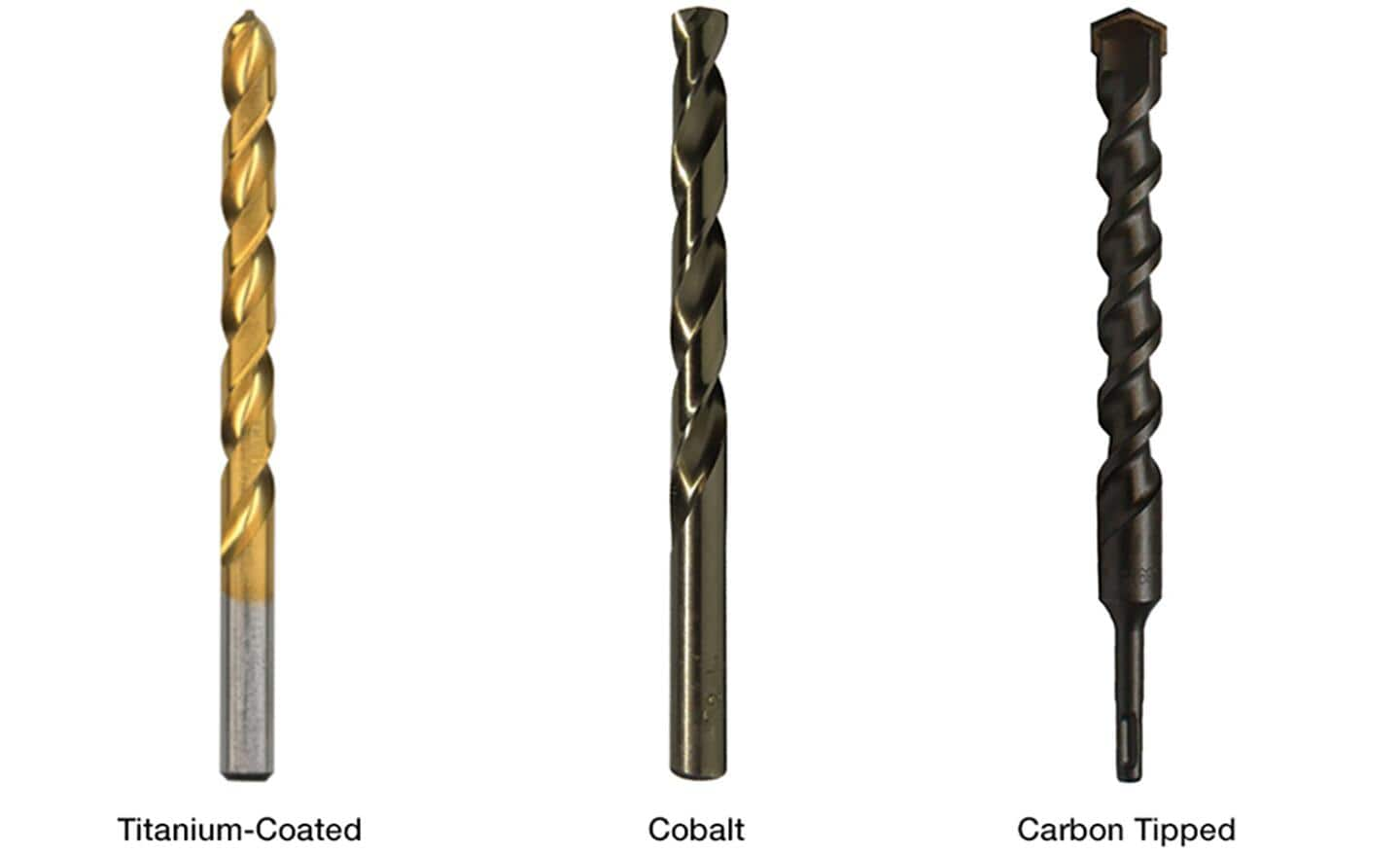
Drill bits are classified by the materials they are manufactured from and the coatings applied to them.
- High-Speed Steel (HSS) drill bits
are used for drilling wood, light metals, fiberglass and PVC. - Black oxide-coated drill bits
are more durable than standard HSS bits and the coating helps the drill bit resist rust. These are best for hardwood, softwood, PVC, fiberglass and steel. - Titanium-coated drill bits
have reduced friction, require less effort and last longer than black oxide-coated bits. These are best for hardwood, softwood, PVC, fiberglass and steel. - Cobalt drill bitsare used for drilling hard metal and steel. They dissipate heat quickly and are highly resistant to abrasions, making them better for drilling into hard metals than black oxide- or titanium-coated drill bits. When considering a cobalt drill bit vs titanium, cobalt bits are usually the best drill bits for stainless steel.
- Carbide-tipped drill bits
stay very sharp over long periods of use and are used mainly for concrete, tile and masonry. These are often the best masonry drill bits for your project. - Bi-metal drill bits are useful for a range of materials like light metal, wood and PVC; bi-metal drill bits cut fast and smooth with greatly reduced vibrations.
- Diamond drill bits are ideal for cutting into glass, sea glass, fused glass, rocks and minerals.
- Alloy steel drill bits are typically used in machine shops for cutting sheet metal of varying thicknesses. These are often the best drill bits for metal if you're working exclusively with thin materials.
Always follow the manufacturer's use and safety recommendations for drill bits and accessories. Make sure the drill bit is compatible with the specific drill you are using, even if they are the same brand*.*
Types of Drill Bit Drive Styles
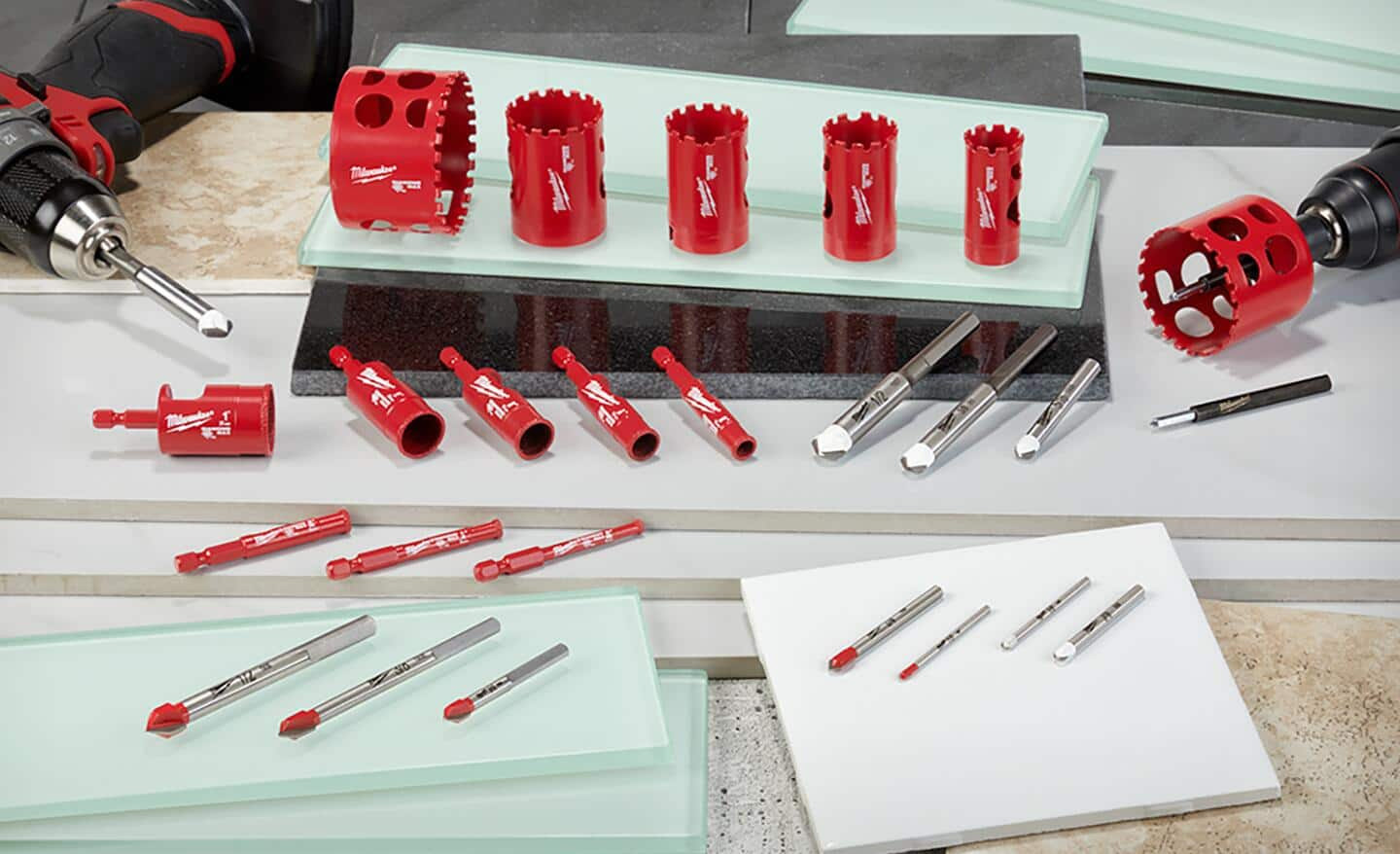
Drill bits come in a range of drive styles, and different options can be useful depending on the work you're doing. Here are a few common types to know:
- Hex bits: Designed to work when an Allen key won't fit, hex bits are often used for furniture construction and disassembly.
- Square bits: Similar to hex bits, square bits are often used in commercially made products and furniture. They're often replaced by hex products in modern production.
- Torx bits: Shaped like a six-sided star, these are often used on vehicles and for some electronics.
- Phillips and slotted bits: A common type of screwdriver bit useful for basic at-home building and repair projects.
- Combination drill bits: A useful multi-purpose bit set that can help handle more building and repair tasks.
How to Maintain Your Drill Bit Types
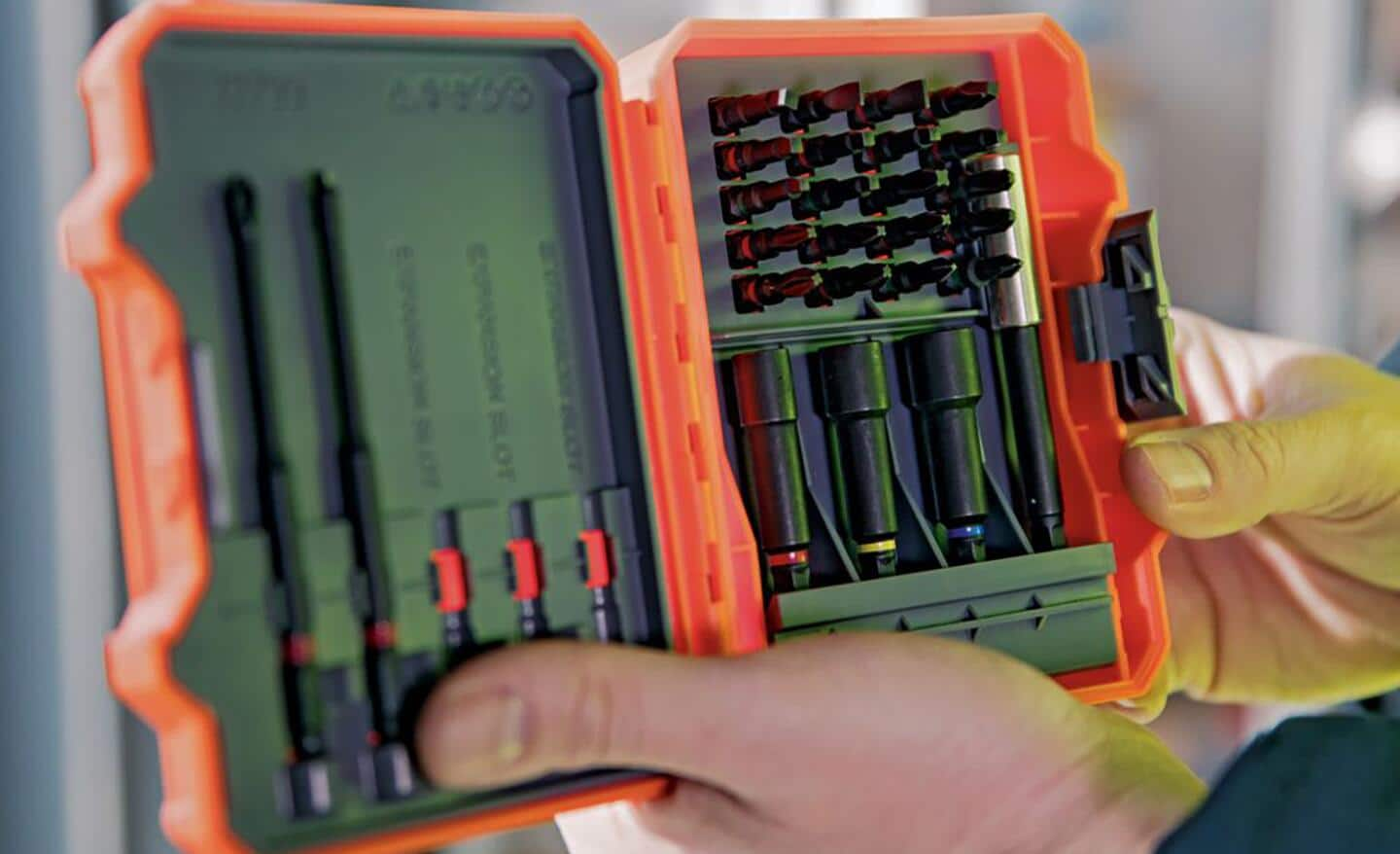
Proper drill bit maintenance is not much different from maintenance for most tools, and it helps prolong the life of your drill bits and keeps them ready for the next job. Caring for your drill bits can also be a matter of safety; dull or damaged drill bits can create problems both in the work and for the worker.
Drill bits are cutting tools. If you do a lot of home projects or heavy-duty construction work, periodically sharpening your drill bits will be necessary. Dull drill bits can increase time and effort needed to complete work and possibly damage the materials you're working on, and may even cause injury. A sharpening tool can be a good investment to keep your drill bits in top shape. More experienced DIYers can accomplish the task with a good set of grinding tools.
Most drill bit sets are sold in a case with space to hold each bit in place. This keeps the drill bits from being nicked or scratched and also provides excellent organization. Each spot is marked for the bit's size and type, making it easy to quickly find the right bit for the project you are completing. If your set didn't come with a case or you've been buying individual drill bits, add a storage box with dividers to your tool set. Don't store more than two bits together and use a permanent marker to mark each space with the size and type of drill bit stored there.
Following are tips for proper drill and drill bit maintenance:
- Let the drill bit cool off after you have finished your project.
- Wipe the drill and drill bit with a clean, dry towel or cleaning cloth.
- Use a clean, dry toothbrush to brush off any shavings or other debris that may cling to the tool.
- Apply machine oil lightly with a paper towel or microfiber cloth. Let it sit for a few minutes, then wipe up any excess oil with a new paper towel.
- Inspect drill bits for any extensive damage and remove damaged drill bits from the set so they can be replaced.
- Place drill bits back into their case and store in a cool, dry place.
For most home projects, twist or brad point styles are usually the most useful drill bit types. You can always add other sizes and specialty drill bits as you need them as well. Choosing the correct drill bit size may seem like a challenge at first, but it gets easier the more you use your drill.
Need help finding the right drill bit for your project? Find products fast using The Home Depot Mobile App. Snap a picture of an item you like and we'll show you similar products.


